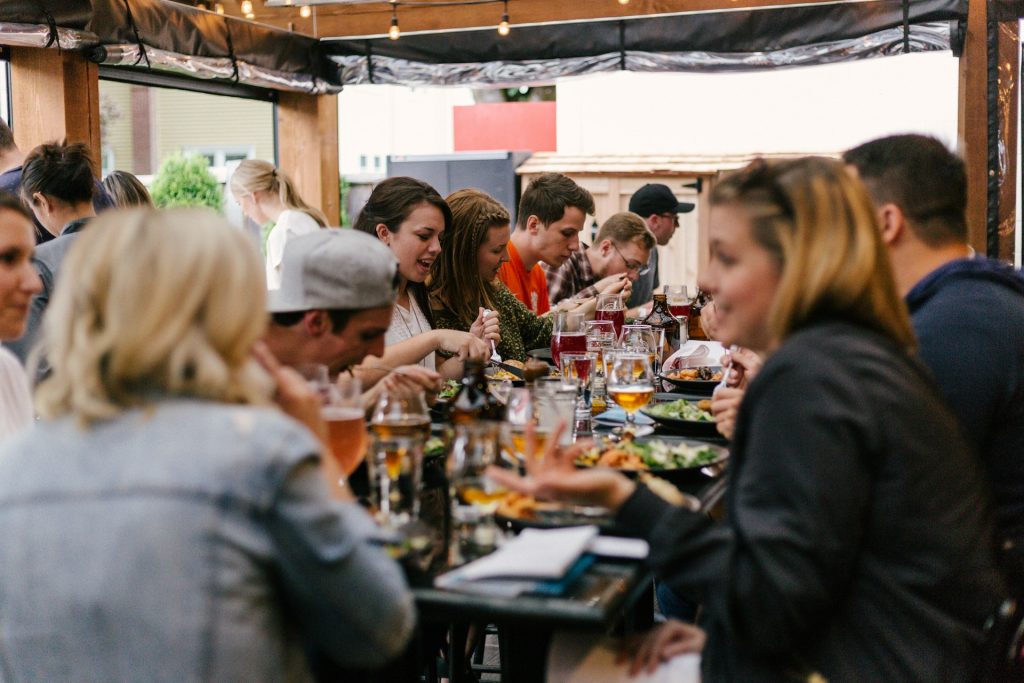Planning a food conference is like orchestrating a grand feast—it requires a meticulous blend of ingredients, precise timing, and a flair for presentation to ensure every guest leaves satisfied. The key lies in meticulous planning, from weaving a compelling narrative around a central theme to selecting a venue that complements and enhances the gastronomic journey. The ultimate goal? To foster an environment where innovation meets tradition, and every participant can savor the rich exchange of culinary wisdom.

1. Choose the Right Theme and Speakers
The atmosphere of your culinary conference is set by selecting the ideal topic. It should be in line with current culinary trends and interests, whether they center on cutting-edge cooking methods, sustainable food sourcing, or the art of running a restaurant. The next important step after deciding on a theme is choosing speakers. Choose reputable chefs, business leaders, or food reviewers who are not only authorities in their fields but also possess the charisma necessary to enthrall an audience. These presenters have the ability to offer priceless insights and spark lively debates among guests, making the conference one that the culinary community will remember.
2. Select an Accessible Venue
A food conference’s ability to succeed is greatly influenced by the location that is selected. It must be roomy enough to comfortably fit exhibitors, demonstrations, and a sizable crowd. Seek locations that offer top-notch culinary amenities to accommodate cooking demonstrations and tastings. Think about the venue’s accessibility as well. If attendees want to drive, there should be enough parking available and it should be simple for them to get there by public transportation. A prominent and central location would be great since they would attract a higher attendance rate. Make sure the location has dependable Wi-Fi and the technological capacity to accommodate interactive workshops and digital presentations.
3. Capture the Moments with Professional Photography
In the vibrant and visually captivating world of food, capturing high-quality images is crucial. Hiring professional event photography services can make a significant difference. These photographers specialize in event coverage, ensuring that every key moment, from the excitement of live cooking demonstrations to the detailed presentations of speakers, is captured. Beyond just documenting the event, these images can be used for marketing future conferences, sharing on social media to increase visibility, and providing attendees with a visual memento that enhances the overall experience. Professional photos reflect the quality and scale of your conference, attracting more attendees and participants in the future.
4. Engage Your Audience with Interactive Sessions
Include interactive sessions in your conference that go beyond just listening if you want to genuinely engage your attendees. Incorporate practical culinary lessons, sommelier-led tasting events, and lectures where attendees can pick the brains of industry entrepreneurs. By allowing participants to use all of their senses, these interactive components enhance and prolong the learning process. They also provide guests a chance to mingle and ask questions in a more relaxed atmosphere, which can promote networking and teamwork. By involving the audience in this way, you can guarantee that they will go from the conference with newfound knowledge, amusement, and enthusiasm for the culinary world.
5. Utilize Digital Tools for Seamless Organization
In today’s tech-driven world, utilizing digital tools for event organization can significantly enhance the efficiency and reach of your food conference. Employ comprehensive event management software for tasks such as ticket sales, registration tracking, and schedule updates. These platforms can also facilitate real-time feedback and Q&A sessions, making the event more interactive and responsive to attendee needs. Furthermore, digital tools can help you gather analytics on attendee engagement and preferences, providing crucial data to refine and improve future conferences. By making the administrative aspect of the conference as seamless as possible, you can focus more on delivering an outstanding culinary experience to every participant.
As the final glasses are cleared and the lights dim on a successful food conference, the echoes of fulfilled expectations and enlightening discussions linger. By curating an experience that blends logistical precision with creative zest, you ensure that your food conference becomes a benchmark for educational and sensory enrichment in the culinary community.
Great article! Sounds like you have great tips on how to organize food conferences.
This is a very good guide on how to organize food conferences. Thanks for sharing!